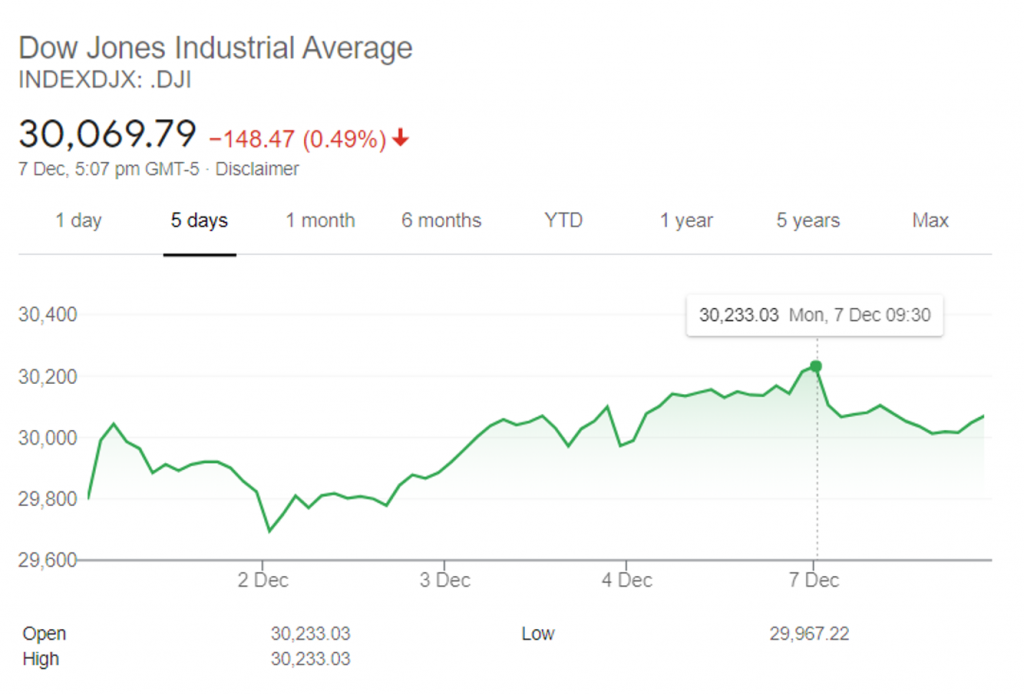The stock market is beginning to recover. The Dow Jones Index[1] hitting its all-time high of 30,233.03 points on 7 December is a positive sign that signals economic recovery.

Should I invest now?
Some might think that they missed the opportunity to invest while the stocks were lower.
However, Warren Buffett once said to be
“fearful when others are greedy, and greedy when others are fearful.”
This insight warns us to continue to do research even when the stock market seems to be doing well. As such, perhaps you should re-evaluate if your investment knowledge is still up to date in this volatile economy. Alternatively, if you are a new investor, this article could be the starting point for your own investment journey.
Why should I diversify?
Diversification is extremely important. It reduces the risks that we face while investing. However, how do we strategise to get the best returns in a low interest environment with an erratic economy,?
This pandemic would also be the first volatile stock market young investors encounter. As such, how should you strategise your investment portfolio well from the get-go?
Current worries of the young investor
Recently, I had an interview with channel 8 alongside an enterprising young investor by the name of Darren Lee. He is a 3rd year student from Temasek Polytechnic, studying Social Media Management.
At merely 13 years old, he started his own online business by observing demands on Carousell[2] and buying cheaper options to sell and earn a profit from the site. Consequently, at 19 years old in 2020, he can earn up to a few thousand a month.
He spends 30% on living expenses while 50% is invested and 20% is saved. After discussing with friends who have similar interests, he started to buy some shares, unit trusts and bonds in 2019.
There is wisdom in the way that he invests. He does not time the market. Instead, he chooses to invest certain amounts of money regardless of the situation in the stock market. If he feels that the market is low, he will actively invest more.
However, he is currently unsure if this investment plan will allow him to meet his financial goals on time.
How a young investor should invest now
I think that a stable and reliable investment plan is more suitable for young investors starting out.
Instead of entering eagerly with large amounts of money and with little to no knowledge, you should take precaution. Many young investors have never invested through a prolonged economic crisis. This economic downturn is very short when compared to the Lehman Brothers crash that happened from 2007 to 2009.
Hence, instead of focusing on short term gains, your investment portfolio should give you returns in the long run. Your portfolio should suit your personal financial goals and must be balanced by an assortment of financial instruments.
So, how do you set up an investment portfolio that will give you good returns in the long run? Firstly, I will break down the different investment asset classes. Subsequently, I will recommend a guideline that will help you to better diversify your portfolio.
Investment Asset classes and their roles
1st class: They consist of dividends and coupons like bonds and endowments. These investments can only be reaped in the longer term but they ensure that there is stability throughout your investing journey.
2nd class: Investments that go through active capital appreciation[3]. They are instruments like stocks and Gold. They control the speed at which you can gain returns and are generally more volatile.
How should you diversify your portfolio now?
50% into Capital Growth shares, 20% into Bonds, 15% into Gold and 15% into cash to balance your portfolio. We are currently in a low interest environment. Consequently, more attention should be given to Gold, as it can preserve value, and bonds that give higher returns.
Many companies have also been undervalued during this pandemic. As such, using the PE ratio[4] to value your stocks will no longer be suitable. Instead you should use 3 fundamental indicators when initially evaluating stocks:
1. Company growth rate[5] and net profit[6]: Both the growth rate and net profit should be more than 7%.
2. Profit Margin[7]: The profit margin should be at least 10% for the company to be an attractive investment.
3. Return over Equity (ROE)[8]: ROE should be at least 15% or above.
I will only evaluate a company on a deeper level after it has fulfilled the 3 indicators above. Additionally, the company should not be easily replaceable by other companies.
Moving ahead: Maintenance of an investment portfolio
Following all the above listed steps does not guarantee a fool-proof investment portfolio that can weather through any economic climate. You must re-evaluate your portfolio regularly. Additionally, you should adjust it according to the market situation to achieve your financial objectives on time.
Many of us have short- and medium-term goals. However, do we truly understand how much money we currently need to invest to obtain our long-term goals?
If you have any questions about your personal investment portfolio or want to learn how to better reap the opportunity you are now having, feel free to reach me via heb@thegreyrhino.sg or 8221 1200.
Remember to leave comments and share this site with your friends. Do subscribe to my newsletter for updates and share this site with your friends too. I would love to connect with you.
*This is an adaptation and addition to the channel 8 interview that was conducted in late November. Click here to watch the interview that was conducted in Mandarin.
[1] Dow Jones Index: The Dow Jones Industrial Average tracks 30 large, publicly known companies. The companies are well established, recognised and financially stable. Their stocks are traded on the New York Stock Exchange and NASDAQ.
[2] Carousell: An online platform that allows businesses and consumers to connect and sell new or second hand items.
[3] Capital Appreciation: A rise in an investment’s market price.
[4] Price-To-Earnings ratio (P/E ratio): Price for the share/ Earnings per share. It indicates how much an investor is willing to pay for each dollar of earnings.
[5] Company growth rate: The speed at which the revenue of the company is growing.
[6] Net profit: Calculated by deducting expenses from the company’s revenue.
[7] Profit Margin: The ratio of the company’s profit divided by its revenue. It acts as an indicator of how well the company is handling its finances.
[8] Return On Equity: Net income divided by Shareholder’s equity. It measures the profitability of the company in relation to the equity earned by the shareholders.

